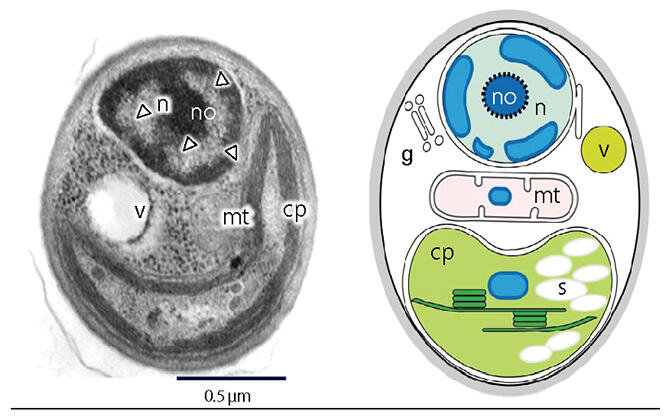Ultrasmall algae are unicellular phytoplankton found in freshwater, seawater and bottom sediments. These extremely small algae cannot be seen with the naked eye. They fix carbon dioxide through photosynthesis and are important organisms that support the Earth's ecosystem. However, most ultrasmall algae on Earth have not been identified, and cultivation methods for them have not been established.
After noticing that his killifish tank had suddenly turned green, Professor Emeritus Tsuneyoshi Kuroiwa of the University of Tokyo examined it under a microscope and revealed the growth of very small algae. A research team led by Professor Sachihiro Matsunaga of the Department of Integrated Biosciences at the Graduate School of Frontier Sciences of the University of Tokyo then spent two years cultivating and genomically analyzing (i.e., analyzing the DNA sequence fully or partially) the algae. The new green alga was named 'Medakamo hakoo'. The cell is 1 µm (one‐millionth of a meter) in diameter, a size seen among the smallest algae. They are approximately one‐tenth the size of normal algae and, thus, may have been overlooked in previous observations.
The algae contain 7629 genes, the smallest number of genes among freshwater green algae reported to date. There are 1263 genes essential for algae, suggesting that the green algae is an originating species that appeared early in the evolutionary process. It also contained a small number of proteins and genes found in many photosynthetic plants. Determining the minimal gene functions required for photosynthesis would be a major step toward realizing artificial photosynthesis. In addition, because the species can be cultivated in large quantities, it may be useful as a low‐cost, carbon‐free biological resource for producing materials such as functional foods, biofuels and cosmetics.
Electron micrograph of Medakamo hakoo (left) and schematic diagram (right)





